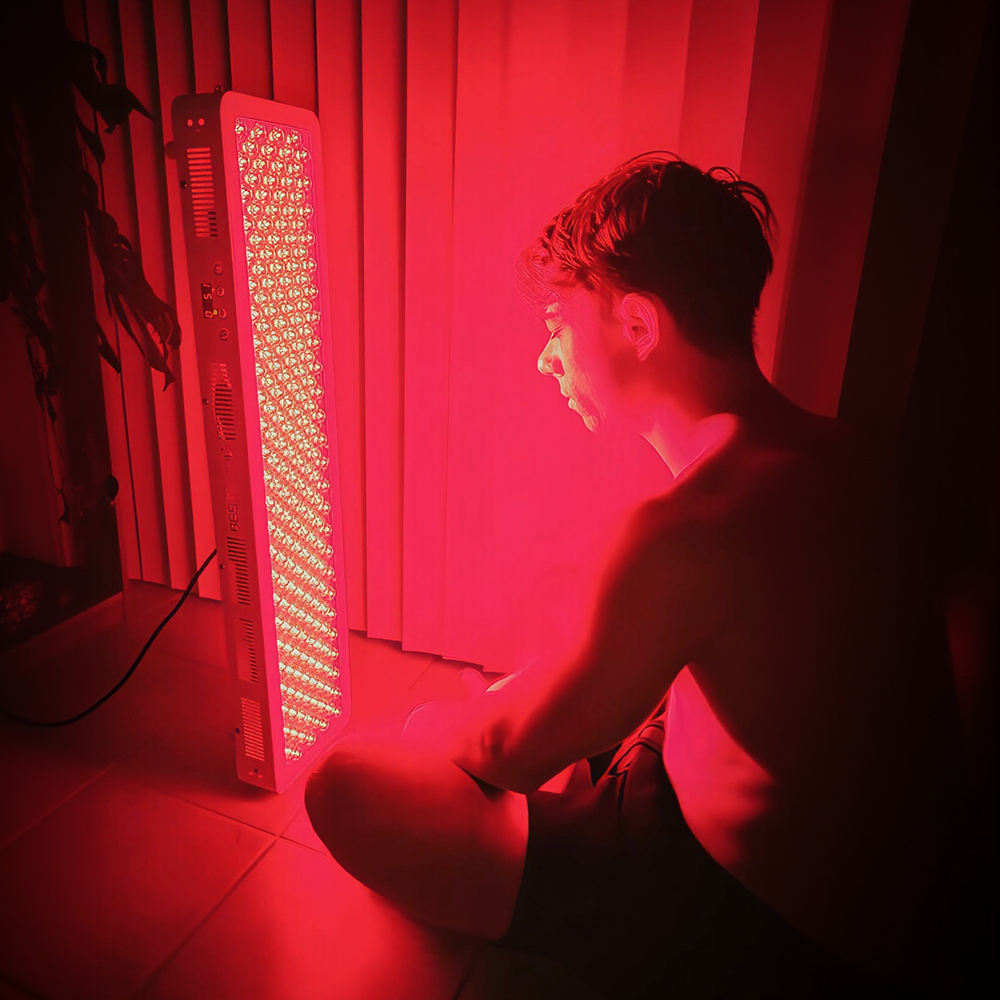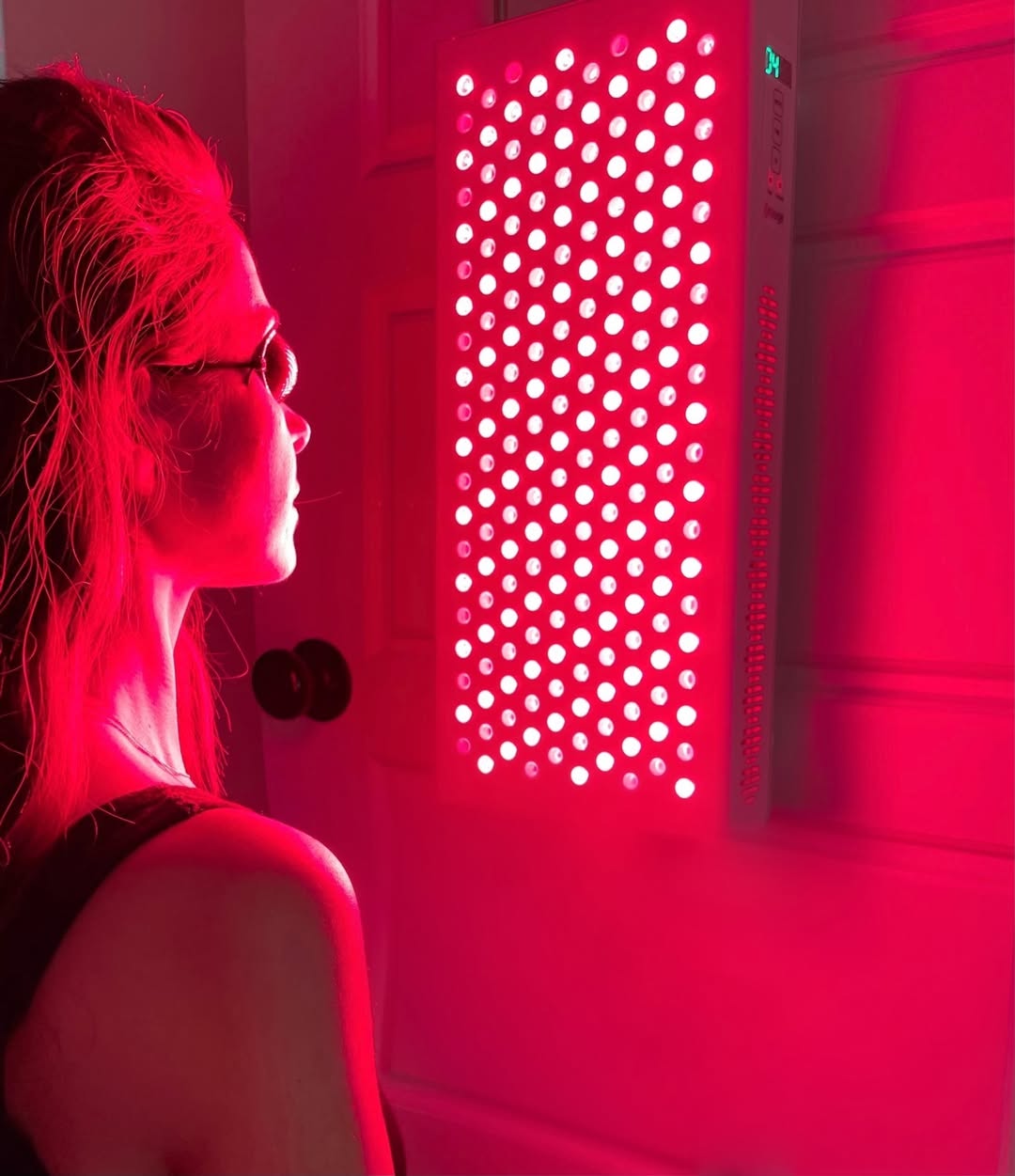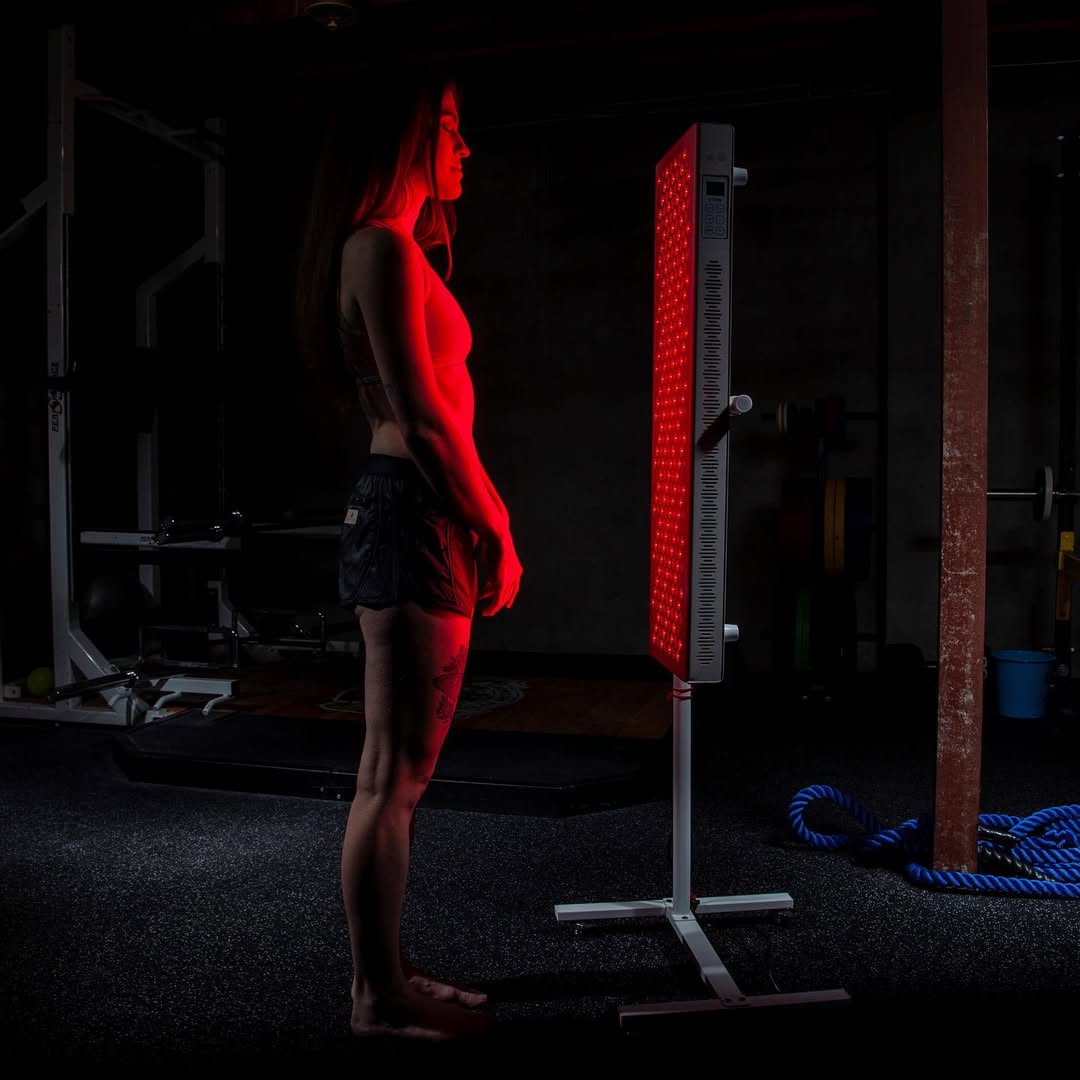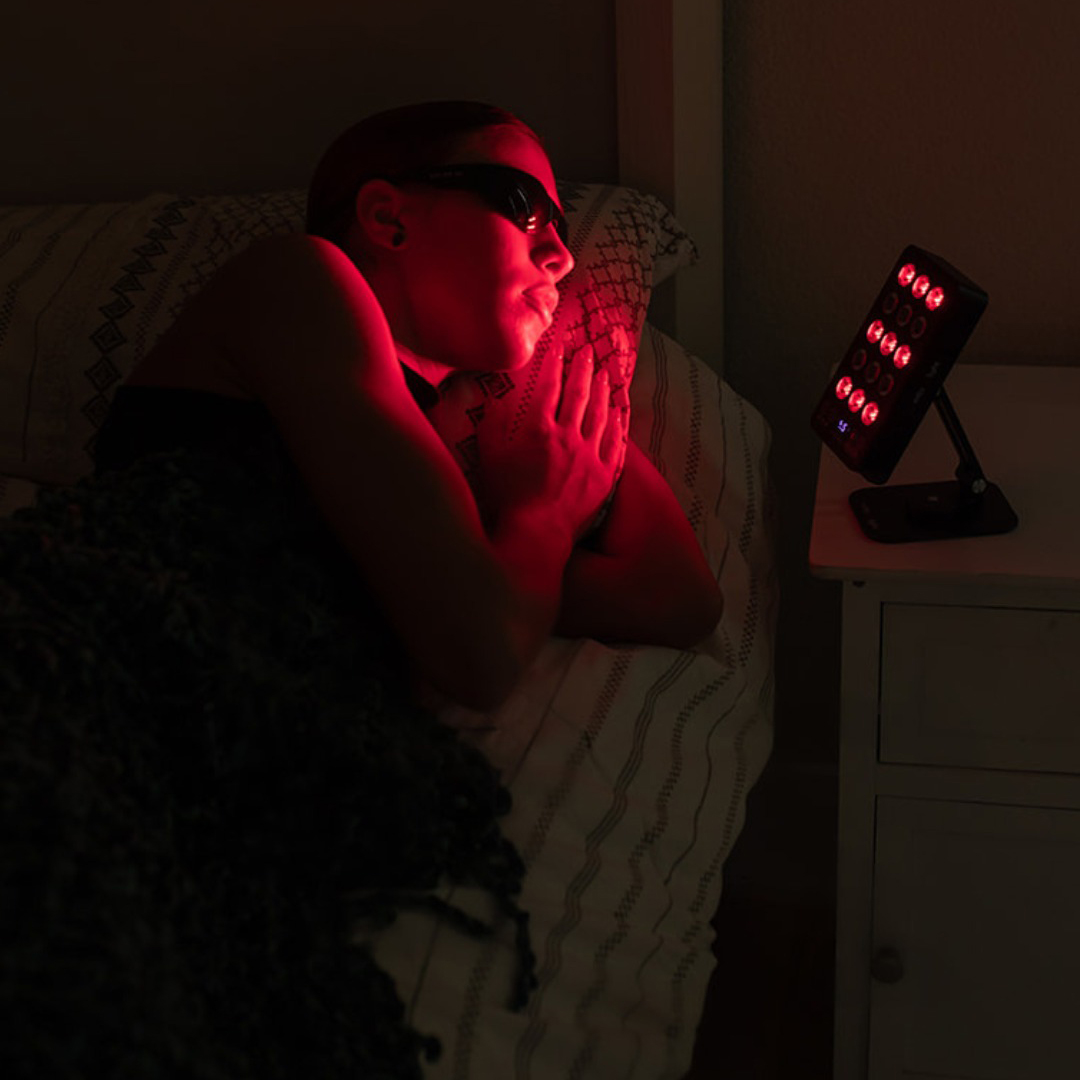![]() Free Shipping
Free Shipping ![]() Buy Now, Pay Later
Buy Now, Pay Later ![]() Eligible
Eligible
White Light Therapy: A Complete Guide to Uses, Benefits & How It Works
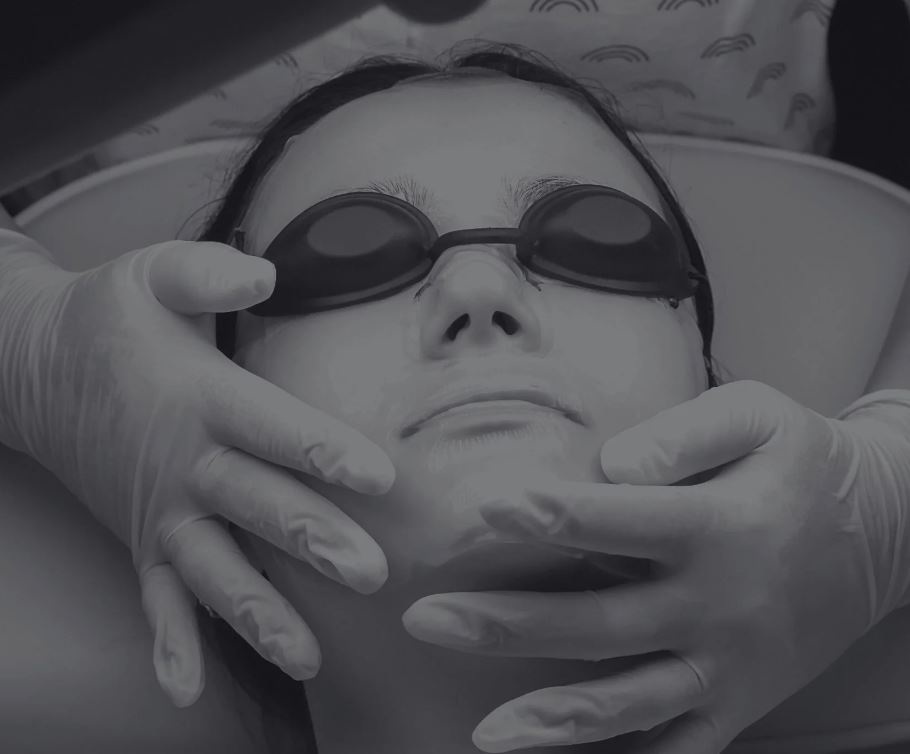
What is White Light Therapy? Shedding Light on a Modern Wellness Tool
In our modern, often indoor-centric lives, many of us are starved of a crucial natural resource: sunlight. White Light Therapy (WLT), also known as Bright Light Therapy, is a powerful, non-invasive treatment designed to compensate for this deficit. By simulating natural outdoor light, this therapy delivers a controlled dose of bright, full-spectrum light to help regulate your body’s internal clock and improve your overall well-being.
Simply put, it’s a way to get the benefits of a sunny morning, even on the darkest of winter days, from the comfort of your home or office.
How Does White Light Therapy Work? The Science Simplified
The magic of white light therapy lies in its ability to influence our brain chemistry and circadian rhythms. Here’s a breakdown of the key mechanisms:
- Regulating Circadian Rhythms: Your body has a master clock in the brain called the suprachiasmatic nucleus (SCN). It relies on light cues, especially blue-wavelength light, to synchronize its 24-hour cycle. WLT, particularly when used in the morning, signals to your SCN that it’s time to be awake and alert, thereby resetting a disrupted sleep-wake cycle.
- Boosting Neurotransmitters: Exposure to bright light is known to suppress the production of melatonin, the hormone that makes you sleepy. Simultaneously, it can stimulate the production of serotonin, a key hormone that stabilizes mood, feelings of well-being, and happiness.
Expert Insight: Dr. Elena Martinez, a neurologist specializing in sleep medicine, explains, “Think of light therapy as a reset button for your brain. For individuals with delayed sleep phases or Seasonal Affective Disorder, a daily session in the morning provides the strong ‘dawn’ signal their brain is missing, effectively pushing their biological clock back into alignment.”
The Visual Mechanism: From Eye to Brain
To make the process even clearer, here is a flowchart of how light therapy influences your body:
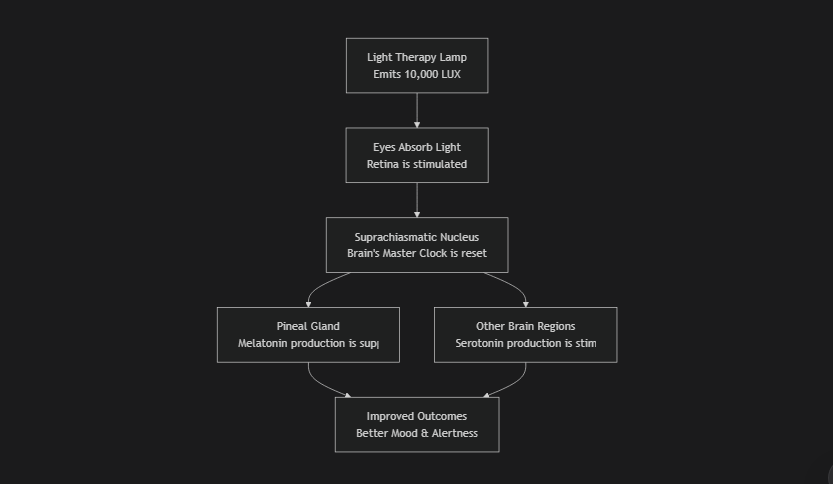
H2: Key Benefits and Uses of White Light Therapy
The applications for white light therapy extend far beyond just the winter blues. Research supports its use for a variety of conditions.
1. Treating Seasonal Affective Disorder (SAD)
This is the most well-known application. SAD is a type of depression that occurs at a specific time of year, usually in the winter. WLT is considered a first-line treatment for SAD, with numerous studies showing its effectiveness in reducing symptoms like low energy, oversleeping, and carbohydrate cravings.
2. Regulating Sleep Disorders
For those struggling with insomnia, jet lag, or shift work sleep disorder, WLT can help recalibrate the body’s internal clock. Morning use can help early risers stay up later, while afternoon/evening use can help night owls fall asleep earlier.
3. Improving Mood and Energy
Even for those without a formal diagnosis, the gray winter months can lead to the “winter blues.” Regular light therapy sessions can boost energy levels, improve focus, and promote a more positive mood.
4. Supporting Skin Conditions
It’s important to distinguish this from UV-based phototherapy. Certain types of LED-based white light (and other colors like red and blue) are used in dermatology to target acne-causing bacteria, reduce inflammation, and promote skin healing.
White Light Therapy vs. Other Common Treatments
How does WLT stack up against other approaches for conditions like SAD? The table below provides a clear comparison.
| Feature | White Light Therapy | Antidepressants (SSRIs) | Talk Therapy (CBT) |
|---|---|---|---|
| Primary Mechanism | Resets circadian rhythm, boosts serotonin | Increases serotonin levels in the brain | Changes negative thought patterns & behaviors |
| Onset of Action | Relatively fast (a few days to 2 weeks) | Slow (4-6 weeks) | Gradual (over several weeks) |
| Side Effects | Minimal (eye strain, headache, nausea) | More common (nausea, insomnia, sexual dysfunction) | Minimal (emotional discomfort) |
| Cost | One-time device purchase | Ongoing prescription cost | Ongoing session costs |
| Best For | Quick, non-pharmacological intervention | Moderate-severe depression, year-round use | Addressing root causes, developing coping skills |
Expert Insight: Dr. Ben Carter, a clinical psychologist, notes, “Light therapy is a fantastic tool in our arsenal. It’s often most effective when combined with other treatments. For my patients with SAD, we might use light therapy for immediate symptom relief while concurrently using Cognitive Behavioral Therapy to build long-term resilience.”
How to Use a Light Therapy Lamp for Best Results
To get the most out of your light therapy and ensure safety, follow these best practices:
- Timing is Everything: Use your lamp within the first hour of waking up for 20-30 minutes. This mimics a natural sunrise and has the strongest effect on your circadian rhythm.
- Consistency is Key: Make it a part of your daily routine, like brushing your teeth. Consistent use, especially during the darker months, is crucial for sustained benefits.
- Position it Correctly: Place the lamp about 16 to 24 inches (41 to 61 cm) from your face, at an angle. You do not need to stare directly into the light. Keep your eyes open, but you can read, check emails, or eat breakfast.
- Check the Intensity: Ensure your device emits 10,000 lux (a measure of light intensity). This is the standard therapeutic dose that allows for shorter session times.
Choosing the Right Light Therapy Device
Not all lamps are created equal. When shopping for a light therapy box, look for these features:
- 10,000 LUX Intensity: This is the gold standard.
- UV Filtering: The lamp should emit visible light without harmful UV rays.
- Large Surface Area: A bigger screen size distributes light more evenly.
- Adjustable Angle: Allows for comfortable positioning.
- EMF Safety: Look for devices with low electromagnetic field emissions.
(FAQ)
Are there any side effects to white light therapy?
Side effects are generally mild and may include eyestrain, headache, or nausea. These often subside after a few days or can be resolved by increasing the distance from the lamp or shortening session time. People with bipolar disorder should use light therapy under medical supervision, as it can potentially trigger mania.
Can I use a regular lamp or my phone for light therapy?
No. Standard household lights and device screens are not nearly bright enough (they are typically under 500 lux) and do not provide the full-spectrum, UV-free light required for effective and safe treatment.
How long does it take to see results?
Many people report feeling an improvement in energy and mood within a few days to a week. For full therapeutic benefits for SAD, it may take up to two weeks of consistent use.
Conclusion: A Brighter Path to Well-being
White Light Therapy is a safe, effective, and scientifically-backed treatment for a range of conditions rooted in circadian rhythm disruption. By harnessing the power of light, we can take a proactive step towards better sleep, stabilized mood, and higher energy levels. If you struggle with the winter months or a disrupted sleep schedule, consulting your doctor about incorporating a light therapy lamp into your routine could be a transformative step toward a brighter, healthier you.



